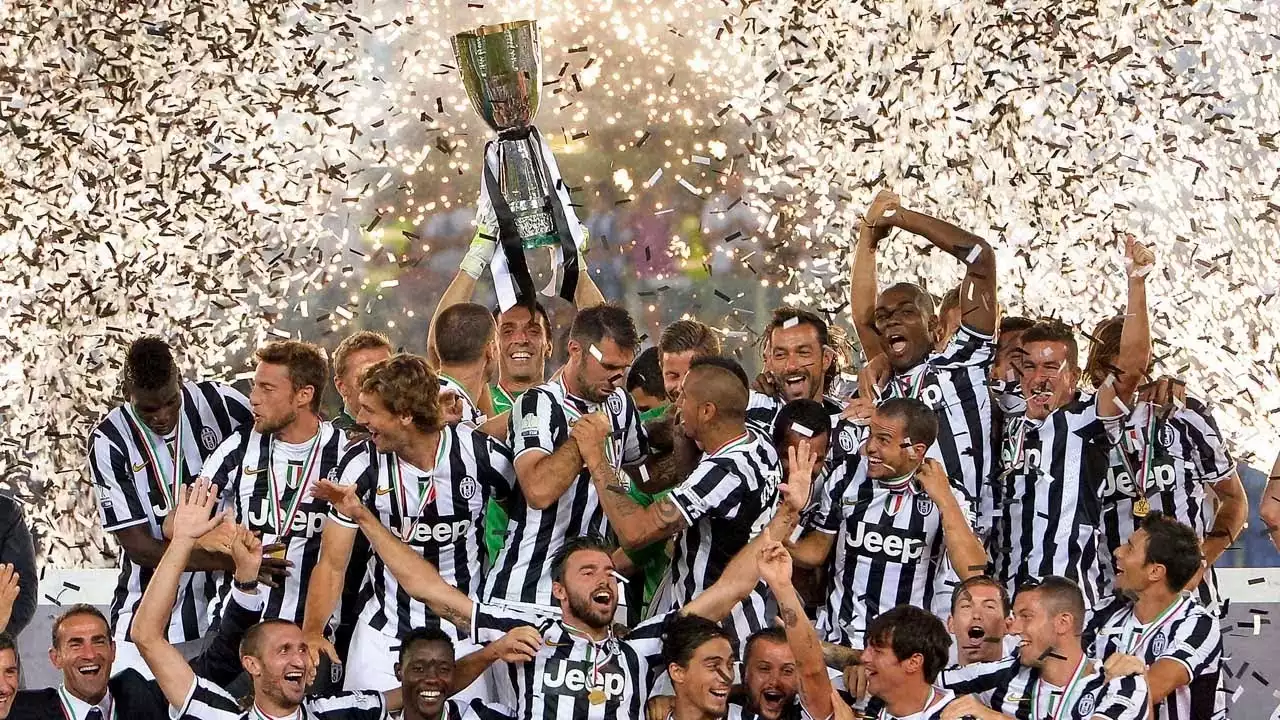Brief overview of Coppa Italia
Coppa Italia is one of the oldest national cup competitions in Europe, dating back almost a century. It involves teams from all levels of Italian football, from the top-flight Serie A to the lower divisions. The tournament follows a knockout format, with teams battling it out in single-leg matches to progress to the next round. The final takes place at the iconic Stadio Olimpico in Rome, adding to the prestige and excitement surrounding the competition.
Despite its long history, Coppa Italia has undergone several format changes over the years. Initially, it was a straightforward knockout tournament, but in recent times, a two-legged semifinal has been introduced to increase the drama and competitiveness. The winner of Coppa Italia earns a spot in the UEFA Europa League, providing an additional incentive for teams to perform well.
Key differences between Coppa Italia and other national cup formats
While the essence of national cup competitions remains the same across different countries, there are notable differences in their formats and traditions. One significant difference between Coppa Italia and other national cups is the number of participating teams. In some countries, like England, the number of teams is significantly higher, allowing for more opportunities for smaller clubs to make a name for themselves.
Another difference lies in the scheduling of the tournament. Coppa Italia is typically played alongside the domestic league fixtures, which can lead to fixture congestion for teams involved in European competitions. In contrast, some national cups, like the Coupe de France in France, are prioritized and played on specific dates, allowing for a more focused and intense competition.
Additionally, the prize money and prestige associated with each national cup vary. While Coppa Italia offers a coveted domestic trophy and a place in the Europa League, the FA Cup in England holds a more prestigious reputation due to its long-standing history and higher prize money. These differences contribute to the unique identity and allure of each national cup competition.
History and significance of Coppa Italia
Coppa Italia holds a special place in Italian football history. Its roots can be traced back to the early 20th century when the Italian Football Federation recognized the need for a national cup competition. The inaugural edition took place in 1922, with Vado emerging as the first champions. Since then, Coppa Italia has witnessed memorable moments, heated rivalries, and legendary performances.
The tournament not only provides an opportunity for teams to compete for silverware but also serves as a platform for smaller clubs to challenge the dominance of the top-tier teams. The underdog stories and giant-killing upsets that occur in Coppa Italia capture the imagination of fans and showcase the unpredictable nature of cup competitions.
Strengths and weaknesses of Coppa Italia
Like any tournament, Coppa Italia has its strengths and weaknesses. One of its strengths lies in its inclusivity, as teams from all divisions have the chance to participate. This allows for the discovery of new talents and the promotion of football across Italy. Moreover, the knockout format ensures that each match is high-stakes and filled with excitement.
However, the timing of Coppa Italia matches can be a challenge for teams competing in European competitions. Fixture congestion and fatigue can affect the performance of these teams, potentially leading to an imbalance in the competition. Additionally, the prize money in Coppa Italia may not be as lucrative as in some other national cups, limiting its appeal to clubs focused on financial gains.
Comparing Coppa Italia with the FA Cup in England
The FA Cup in England is arguably the most prestigious and historic national cup competition in the world. It dates back to 1871 and involves teams from all levels of English football. The format of the FA Cup is similar to Coppa Italia, with single-leg matches leading up to the final at Wembley Stadium. However, the number of participating teams is significantly higher in the FA Cup, allowing for more opportunities for underdogs to shine.
The FA Cup also holds a higher level of prestige and financial rewards compared to Coppa Italia. The winner of the FA Cup earns a place in the UEFA Europa League, similar to Coppa Italia, but the prize money and exposure associated with the FA Cup are often greater. This makes the FA Cup an attractive proposition for clubs aiming to boost their revenue and profile.
Comparing Coppa Italia with the DFB-Pokal in Germany
The DFB-Pokal in Germany is another prominent national cup competition known for its intensity and rich history. It features teams from all divisions of German football, with the final taking place at the iconic Olympic Stadium in Berlin. The format of the DFB-Pokal is similar to Coppa Italia, with single-leg matches leading up to the final.
One notable difference between Coppa Italia and the DFB-Pokal lies in the scheduling. The DFB-Pokal matches are played midweek, allowing teams to focus solely on the cup competition. This ensures that the DFB-Pokal receives the attention and intensity it deserves, with fewer distractions from the domestic league fixtures.
Comparing Coppa Italia with the Coupe de France in France
The Coupe de France is the oldest national cup competition in France, dating back to 1917. It brings together teams from all levels of French football, including amateur clubs, providing an opportunity for giant-killing upsets. The format of the Coupe de France is similar to Coppa Italia, with single-leg matches leading to the final at the Stade de France.
One unique aspect of the Coupe de France is the tradition of allowing amateur clubs to compete against professional teams. This creates an exciting dynamic and often leads to memorable stories of underdogs toppling giants. The Coupe de France holds a special place in French football culture, showcasing the diversity and passion for the game across the country.
Impact of Coppa Italia on Italian football
Coppa Italia plays a crucial role in Italian football, providing an avenue for teams to compete for domestic glory and European qualification. The tournament allows smaller clubs to make a name for themselves and challenge the dominance of the top-tier teams. The exposure and revenue generated from Coppa Italia can significantly impact the financial stability and growth of these clubs.
Furthermore, the intense and high-stakes nature of Coppa Italia matches prepares teams for the challenges of European competitions. The experience gained from competing in Coppa Italia can be invaluable in helping Italian teams perform well on the continental stage. Overall, Coppa Italia's impact extends beyond the trophy itself, shaping the landscape of Italian football.
Coppa Italia holds a unique place among national cup competitions. Its rich history, inclusive format, and thrilling matches make it a captivating tournament for players and fans alike. While it may have its strengths and weaknesses, Coppa Italia's significance in Italian football cannot be undermined. By comparing it with other national cups like the FA Cup, DFB-Pokal, and Coupe de France, we gain a deeper appreciation for the diverse traditions and excitement that each competition brings.










